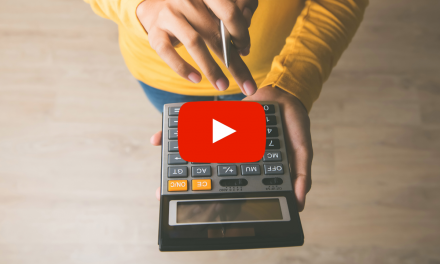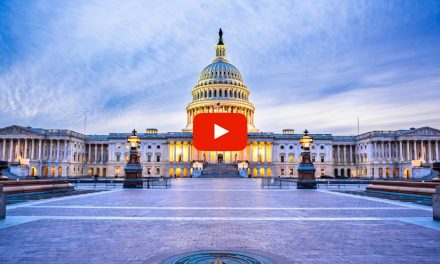
Activating a Non-Renewed or Inactive Physician License

Updated 2-6-2018
All Medical Practice Act licenses, including chiropractic, medical and osteopathic licenses, run on the same 3-year cycle. 2017 and each third year thereafter is a renewal year during which licenses expire on July 31. For most doctors who renewed on time during previous renewal cycles and who complete their continuing medical education prior to July 31 of the current cycle, renewal will be a routine process.
However, activating a license that was not renewed or has been placed on inactive status involves additional steps. Requirements vary, depending on the status of the license and the length of time since the license was last renewed. Note that activation from non-renewed or inactive status, which will be reviewed in this article, is an entirely different process than removing a discipline from a license (which will be covered in another ICS article).
Terminology
Understanding relevant terminology helps to understand the procedures, because terms that are used loosely in everyday speech may have specific meanings when used in licensing. For example, “reinstatement” and “restoration” are not the same under the Medical Practice Act. The Act recently clarified that, “’[re]instate’ means to change the status of a license from inactive or non-renewed status to active status,” while “’[r]estore’ means to remove an encumbrance from a license due to probation, suspension, or revocation.” (225 ILCS 60/2). In other words, the reinstatement discussed in this article does not apply in cases where a license is under current discipline.
Status Categories for Licenses Not Under Current Discipline
The procedure required to reinstate a license will be determined by its current status. Non-disciplined licenses fall into one of the following:
- Active license – An active license is one that has been properly renewed prior to the current renewal cycle and is unrestricted (not under current discipline.)
- Non-renewed license – A non-renewed license is simply a license that the holder has not renewed by its expiration date. If you take no action at renewal time, your license will automatically go into non-renewed status (a non-disciplinary status). Non-renewed licenses are also referred to as “expired or lapsed,” and practice is prohibited. If you seek to renew, you will have to pay lapsed fees and penalty fees.
- Inactive license – An inactive license is a license that has been voluntarily placed in inactive status (non-disciplinary) by request of the licensee, usually at renewal time. As for a non-renewed license, practice is prohibited. If you seek to reinstate your inactive license, you will pay less in fees and penalties than to reinstate a non-renewed license.
Note: Illinois does not have a “retired” status. Physicians who no longer practice and do not renew are shown in non-renewed status in the status field under the License Lookup portion of the IDFPR website. However, if the IDFPR is notified of the death of a licensee, it will reflect “Deceased” in the status field.
Note that even if a license was at one time in non-renewed or inactive status, it is not immune from discipline if the IDFPR believes the license holder has violated the Medical Practice Act. Therefore, before taking action to reinstate a license, confirm the status of your license on the IDFPR website at https://ilesonline.idfpr.illinois.gov/DPR/Lookup/LicenseLookup.aspx.
(For a list of disciplinary statuses that require a different activation procedure, see information provided at the end of this article.)
General Reinstatement Procedure and Requirements
As stated above, reinstatement occurs when a licensee who has allowed a not-currently-disciplined license to lapse (by not renewing), or when a licensee who has placed a license on inactive status, takes steps to have the license placed back in active status. (For links to the relevant sections of the Medical Practice Act and Rule, see information at the end of this article.)
Section 21 of the Act establishes the right of a licensee to reinstate a non-renewed or inactive license if the licensee provides:
- proof of fitness to practice,
- proof of continuing education requirements for one renewal period, and
- payment of the required reinstatement fee.
Section 21 also allows any licensee to place his or her license on inactive status, which excuses payment of some fees if the licensee applies to resume active status in the future (see details below).
Current competency is the primary concern for regulators when deciding whether to grant reinstatement. If the licensee has not actively practiced in another jurisdiction for an extended period, the IDFPR Medical Licensing Board may require additional education, training or an examination (unless the lapse occurred due to military service). The IDFPR and the Medical Licensing Board review reinstatement applications based on the length of time the license has been non-renewed or inactive, as well as the activities in which the licensee has participated during that period. Additional steps are required if the period of lapse or inactive status is 3 years or greater.
Reinstatement of Licenses that Have Been Non-Renewed or Inactive for Less than Three Years
The IDFPR recently updated its website page regarding physician license reinstatement for licenses that expired on July 31, 2017. See https://www.idfpr.com/Renewals/apply/Forms/F2409.pdf.
Physicians who wish to reinstate licenses that are either non-renewed or inactive for less than three years must provide to the IDFPR:
(1) A signed and dated statement that the physician wishes to reinstate the license to active status. The statement must include all of the following:
- Full name (first, middle, last);
- Illinois license number;
- Current address of record (registered address with the IDFPR)
- Daytime telephone number;
- Current email address.
(2) A completed, signed and dated personal history questionnaire (attached to page on IDFPR website)
(3) Documentation of continuing medical education (CME) as required by rule. You are required to provide copies of certificates showing 60 hours of formal CME and a log showing 90 hours of informal CME (unlike renewing during the regular renewal period, which requires only the checking of a box to certify completion of required CME). Note that CME will be applied only if it was taken within 3 years prior to reinstatement. Example: your license was not renewed by July 31, 2017. You file for reinstatement on March 1, 2018. You may not count any CME taken prior to March 1, 2015. Additionally, you may not re-use the same CME courses toward your next renewal. For CME content requirements, see Medical Practice Act Rule Section 1285.110 at: http://www.ilga.gov/commission/jcar/admincode/068/068012850A01100R.html
(4) Fee (see chart on IDFPR website at LMUChart.csv
(5) [Controlled Substances Registration – not applicable to chiropractic physicians]
(6) Complete the physician profile — see Medical Practice Act Rule Section 1285.305 at: http://www.ilga.gov/commission/jcar/admincode/068/068012850C03050R.html
Update your physician profile at: https://www.idfpr.com/applications/ProfessionProfile/ProfileUpdateMain.aspx
- Mail all required documentation and fee payment to:
Department of Financial and Professional Regulation
Division of Professional Regulation
320 West Washington Street, 3rd Floor
Springfield, IL 62786
The personal history form includes questions that are included on all renewal application, including whether the applicant suffers from an impairing condition, has been charged with or convicted of criminal acts, or is delinquent in child support. If the answer to any of those questions is “yes,” the IDFPR will open an investigation to determine whether or not to reinstate the license, and the applicant may be called for an interview with the board.
Note: The only difference between reinstating from non-renewed versus inactive status is that fees are less for licenses reinstated from inactive status.
Reinstatement of Licenses that Have Been Non-Renewed or Inactive for Three Years or More
Physicians who wish to reinstate a license after it has been expired or been placed on inactive status for more than 3 years are required to:
- File a “restoration” application (note inconsistency in use of term “restoration,” which means to remove discipline. However, this is the current form used by the IDFPR). The application with instructions may be found at: http://www.idfpr.com/renewals/apply/Forms/Ch-end.pdf
- Complete the physician profile — see Medical Practice Act Rule Section 1285.305 at: http://www.ilga.gov/commission/jcar/admincode/068/068012850C03050R.html;
- Provide copies of certificates showing 150 hours of continuing medical education (unlike renewing during the regular renewal period, which requires only the checking of a box to certify completion of required CME). For CME requirements, see Medical Practice Act Rule Section 1285.110 at: http://www.ilga.gov/commission/jcar/admincode/068/068012850A01100R.html;
- Pay required fees.
- A chiropractic physician is also required to submit one or more of the following to prove current professional capacity to practice safely (Requirements are different but parallel for medical and osteopathic physicians. This list is taken from Medical Practice Act Rule Section 1285.130 and includes those applicable to chiropractic physicians):
1) Sworn evidence of active practice in another jurisdiction. That evidence must include an official statement from the other jurisdiction that the licensee was authorized to practice during the term of active practice.
2) An affidavit attesting to military service as provided in Section 21 of the Act.
* * * * * * * * * *
3) For individuals applying for a chiropractic license, proof of completion of 960 classroom hours (academic hours) in an accredited chiropractic program within 3 years from the date of application or the Special Examination for Chiropractic (SPEC) or its equivalent as approved by the Board. [Note: The Medical Licensing Board may not consider SPEC sufficient on its own to prove current capacity. See explanation below.]
Note that this rule is more stringent than the one for new graduates who wait more than 2 years from graduation to apply for a license (Section 1285.95). The new graduate rule allows these applicants to submit research, many forms of training, the publication of papers and clinical activities to prove current competency. However, the rule for licensees who have been out of practice for 3 years or more is to instead count practice in another jurisdiction, military service, and/or 960 hours in an accredited training program toward current competency.
Although the rule lists passage of the SPEX (for allopathic and osteopathic physicians) and SPEC (for chiropractic physicians) examinations as proof of current competency, recently the Medical Licensing Board has tended not to accept those exams as adequate by themselves. Chiropractic physicians who have not been in current practice in another jurisdiction or in military service have generally been required to complete an educational program of the 960 hours that meets the standards in 130(c)(4) above, or pass the National Board of Chiropractic Examiners Examination Part IV (clinical skills), or both. The IDFPR is looking into the availability of remedial educational programs because they are not routinely included in the curricula of most chiropractic colleges. For now, the ICS recommends that applicants who need a 960-hour program work with an accredited chiropractic college to design a compliant program on a case-by-case basis. The applicant should communicate with the IDFPR prior to starting the program to gain as much assurance as possible that it meets with requirements.
The IDFPR may require a licensee seeking reinstatement to appear for a Medical Licensing Board interview when the IDFPR has any questions about the information provided. It is common practice for the Board to interview applicants who have been out of practice for 3 or more years to determine their current competency. This an informal proceeding that takes place during the closed portion of the Board meeting. The Board will review the licensee’s reinstatement application and documentation and ask questions to clarify the nature of the licensee’s activities or additional classroom hours. The licensee is permitted to offer any relevant additional information to the Board. At the conclusion, the Medical Licensing Board will make a recommendation as to whether an applicant meets the requirements to have his or her license reinstated, or, if not, the conditions the applicant will need to meet.
Fees for Reinstatement
Fees will vary, depending on whether the license is reinstated from inactive status or non-renewed status, and whether the licensee resides in Illinois. For inactive status, when the person requests reinstatement during a license cycle (prior to the renewal period), the applicant will only need to pay the renewal fee for the current license cycle. However, if the license is non-renewed, the applicant must pay the renewal fee for all lapsed renewal cycles, plus a penalty, with a cap of $1,400 for any type of physician applicant.
Fees for reinstatement are currently assessed as follows (see IDFPR chart at https://www.idfpr.com/Forms/DPR/physician%20reinstatement%20info%202017.pdf):
- Inactive in-state resident: $690.00
- Inactive out-of-state resident: $1,380.00
- Non-renewed in-state resident: $920.00 if renewed within 3 years, $1,400.00 if non-renewed more than 3 years. ($690.00 per renewal period + $230.00 penalty fee – capped at $1,400.00)
- Non-renewed out-of-state resident: $1,400.00. ($1,380 per renewal period + 230.00 penalty fee – capped at $1,400.00)
To complicate matters, when the medical professions are in the renewal period, any licensee who did not renew during the previous three-year cycle would be considered two cycles behind and would accrue an additional renewal fee, limited by the $1,400 cap. For example, for licensees who did not renew in 2014, prior to the 2017 renewal period starting, the fee would have been $690, plus a penalty fee of $230, totaling $920. However, once the profession went into the renewal period (about 3 months prior to July 31, 2017), the same applicant would have had to pay an additional renewal fee ($690), which would total $1,610, but is capped by law at $1,400. Of course, these totals could change if renewal fees change, because applicants for reinstatement of non-renewed licenses are required to pay renewal fees for all non-renewed cycles, up to the maximum amount.
Another situation occasionally occurs when the licensee was issued his or her first license within 12 months prior to the expiration date (the end of that license cycle on July 31). If that license is not renewed, the fee for renewal would be $230.00 plus the $230.00 penalty fee ($460.00) for Illinois residents and $460.00 plus the $230.00 penalty fee ($920.00) for non-residents. If the licensee placed the same license on inactive status, the fee to reinstate would be $230.00 for residents and $460.00 for non-residents for the first cycle.
Conclusion
Circumstances may arise that make license renewal impossible during a particular period of any physician’s life. However, if the doctor believes the situation is temporary and intends to continue to practice, it is clearly simpler to maintain an active license, if at all possible. At this time, licensees may complete online all continuing education required for renewal by taking courses from approved providers such as the ICS. If a licensee cannot meet the requirements for routine renewal, he or she should remain informed of the professional capacity requirements in the Medical Practice Act and Rules, as they apply to any plans for reinstatement. The ICS remains the premier resource for this type of profession-specific information for chiropractic physicians in Illinois.
* * * * * * * * * *
The conditions for reinstatement are found in Section 21 of the Medical Practice Act (225 ILCS 60/21), as well as Section 130 of the Rules for the Medical Practice Act (68 Ill. Adm. Code 1285.130). The Act may be viewed at: http://www.ilga.gov/legislation/ilcs/ilcs3.asp?ActID=1309&ChapterID=24, and Rule at: http://www.ilga.gov/commission/jcar/admincode/068/068012850A01300R.html.
Please see this note if you review the rule in the link above:
The title and terminology of the rule is confusing because it uses the word “restoration” instead of “reinstatement.” As explained above, “restoration” has now been clarified to refer to the removal of a discipline from a license. The ICS has confirmed with the IDFPR that Section 130 refers to conditions for reinstatement from non-renewed or inactive status, not restoration from disciplinary status, and will be amended in the future to conform to the correct definitions. Therefore, the correct rule for reinstatement requirements is still Section 130, even though it incorrectly uses the term “restoration.”)
Disciplinary Statuses
All of the statuses listed below are considered formal disciplines that are public, reflected on the IDFPR website, reportable to the National Practitioner Data Bank, and generally must be disclosed by a licensee on applications that ask whether the licensee has ever been disciplined. A license that is in a disciplinary status may be activated only by filing a Petition for Restoration and following the restoration process. The reinstatement process is not available for licenses under these status categories:
- Reprimand – An official record that the license has been disciplined, but allows the license status to remain active and allows the licensee continued unrestricted ability to practice.
- Probation – A sanction that permits the licensee to continue to practice, subject to certain terms and conditions for a period of time.
- Suspension – A sanction that means the licensee may not practice during the period specified in the IDFPR order.
- Temporary Suspension – Several Illinois practice acts including medical, dental and pharmacy) give the Director of DPR authority to temporarily suspend a professional’s license prior to and pending a hearing before the appropriate board or committee, where the Director finds that a professional licensee must stop practicing immediately due to an immediate danger to the public.
- Revocation – A sanction that means the licensee may not practice indefinitely.
- Permanent Revocation – A form of revocation that is permanent and for which the licensee has no right to file a petition to have the permanent revocation lifted.

















